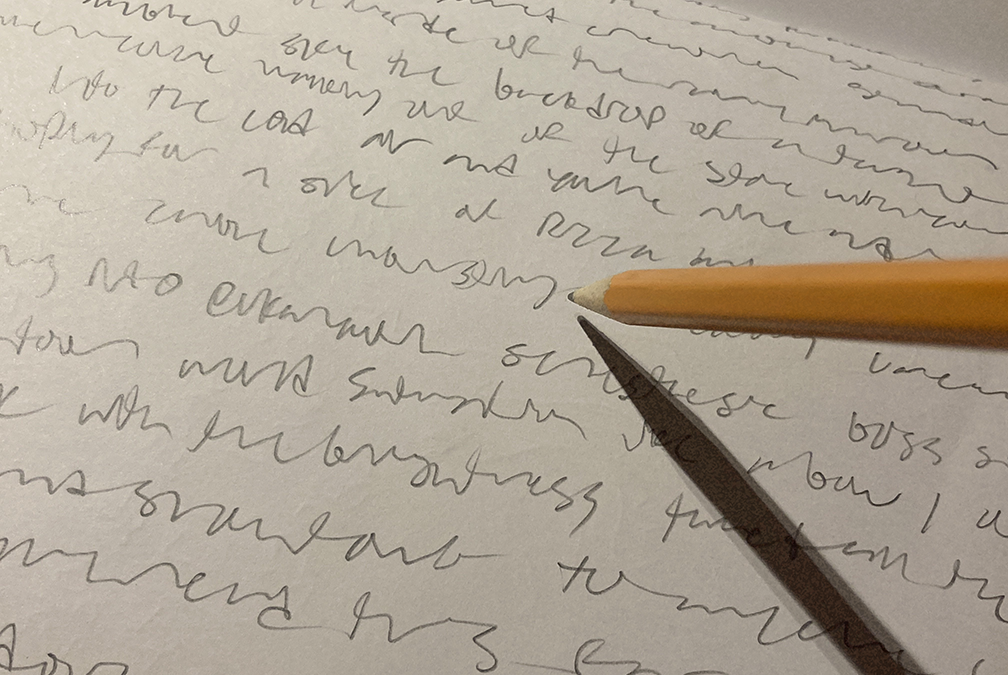Writing inspiration can come from so many sources, but what about from your own subconscious?
It’s easier (and more fun) than you might think. The Surrealists were notorious for using their subconscious minds as a way to inform their creative process. Their methods often took the form of parlor games—simple drawing or writing activities that could be played with a small group of friends. Oftentimes, the work that resulted from these games was nonsensical, bizarre, or just downright absurd. But that isn’t always a bad thing! Sometimes allowing yourself to write in the realm of the absurd and to create unusual, unrefined work can be a great way of approaching ideas from a new angle and finding directions to take your writing in that you may have never thought of otherwise.
Let’s explore some of the various games played by the Surrealists, and how they can be applied to your writing:
The Exquisite Corpse
This is perhaps the most famous Surrealist parlor game of all. For writers, this is played by writing a few sentences, covering most of what you’ve written up so that only the last sentence or so is visible, and then passing your work on to the next player. As the game goes on, a story is assembled between writers who have only a limited understanding of what everybody else wrote. As a result, the story can take rapidfire logical twists and turns, contradict itself multiple times over, or introduce bizarre characters and events. When you’re done, you can either accept your finished Exquisite Corpse as a self-contained story, or you can always go back and write further drafts inspired by the story you created, expanding upon elements you enjoyed and getting rid of elements you didn’t care for as much. Give it a try!
This game can also be played by drawing rather than writing—in this version, the first player draws a picture on part of a piece of paper, folding it over so that only a small portion of what they drew is visible, and then passes it on. The process is repeated until the drawing is done, at which point the players can unfold the paper and see their finished creation! This version of Exquisite Corpse can also be played online, on websites such as Monsterland.
Automatic Writing / Automatism
This game has a much simpler premise, and can be played solo. The goal of automatic writing is to write completely without restrictions, just putting words onto paper without considering narrative or logical order. This is a form of spontaneous creation that the Surrealists were very interested in, as they believed that it allowed them to access a purer, less diluted form of the creative subconscious. (You may be starting to pick up a few commonalities in what the Surrealists were into by now). You can start with a prompt, a particular image, a feeling—whatever strikes you. This can be a very useful method for generating lots of ideas which you can later revisit and expand upon in future pieces. Plus, it can be intimidating to try and “nail it” on your first draft, which is why this technique can be fun and refreshing!
Similar to the Exquisite Corpse, automatism can be applied to writing, drawing, or both!
Dada Poetry
Though this technique is rooted in Dada and not Surrealism, the two movements were closely interconnected and shared many creative aims regarding the deconstruction of rational thought and logic (although certainly not without differences in approach). This particular technique was practiced by Tristan Tzara, one of the pioneers of the Dada movement.
For this, you’ll need any piece of printed writing that you don’t mind sacrificing in the name of art. A newspaper article, page from a magazine, or even some of your own writing will do. You’ll need to cut each word out individually, put all of the words in a bag, shake gently, and take them back out, writing them down in the order that you pull them. This expands upon the obscurities of the previous two games by incorporating the element of totally random chance. You may find that your newly scrambled piece of writing might make sense in interesting ways! If you wish, you can even rewrite and reassemble your absurdist poem however many times it takes for you to end up with a piece of writing that you truly love.
Hopefully some of these methods provide you with fresh ideas to explore in your writing practice! Have fun, and remember to keep it weird!
Meet the blogger: MAX RIDENOUR is a senior at Hamline, majoring in graphic design and minoring in creative writing. They like to keep their hands in many creative pots, between visual art, design work, and involvement in the Twin Cities DIY music scene. Max finds inspiration from many sources, including but not limited to: street art, Studio Ghibli movies, claymation, speculative evolution, and Internet oddities.
MAX RIDENOUR is a senior at Hamline, majoring in graphic design and minoring in creative writing. They like to keep their hands in many creative pots, between visual art, design work, and involvement in the Twin Cities DIY music scene. Max finds inspiration from many sources, including but not limited to: street art, Studio Ghibli movies, claymation, speculative evolution, and Internet oddities.


